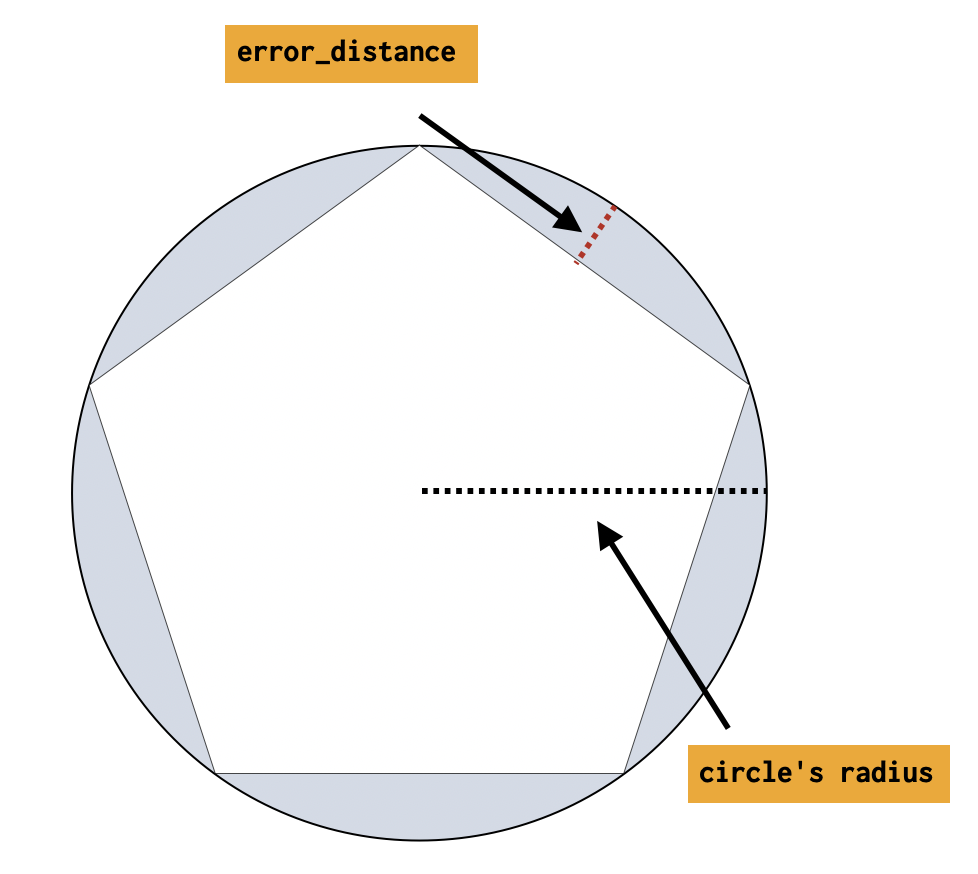本地英文版地址: ../en/ingest-circle-processor.html
Circle Processoredit
Converts circle definitions of shapes to regular polygons which approximate them.
Table 34. Circle Processor Options
| Name | Required | Default | Description |
|---|---|---|---|
|
yes |
- |
The string-valued field to trim whitespace from |
|
no |
|
The field to assign the polygon shape to, by default |
|
no |
|
If |
|
yes |
- |
The difference between the resulting inscribed distance from center to side and the circle’s radius (measured in meters for |
|
yes |
- |
which field mapping type is to be used when processing the circle: |
|
no |
- |
Conditionally execute this processor. |
|
no |
- |
Handle failures for this processor. See Handling Failures in Pipelines. |
|
no |
|
Ignore failures for this processor. See Handling Failures in Pipelines. |
|
no |
- |
An identifier for this processor. Useful for debugging and metrics. |

PUT circles
{
"mappings": {
"properties": {
"circle": {
"type": "geo_shape"
}
}
}
}
PUT _ingest/pipeline/polygonize_circles
{
"description": "translate circle to polygon",
"processors": [
{
"circle": {
"field": "circle",
"error_distance": 28.0,
"shape_type": "geo_shape"
}
}
]
}
Using the above pipeline, we can attempt to index a document into the circles index.
The circle can be represented as either a WKT circle or a GeoJSON circle. The resulting
polygon will be represented and indexed using the same format as the input circle. WKT will
be translated to a WKT polygon, and GeoJSON circles will be translated to GeoJSON polygons.
Example: Circle defined in Well Known Textedit
In this example a circle defined in WKT format is indexed
PUT circles/_doc/1?pipeline=polygonize_circles
{
"circle": "CIRCLE (30 10 40)"
}
GET circles/_doc/1
The response from the above index request:
{
"found": true,
"_index": "circles",
"_type": "_doc",
"_id": "1",
"_version": 1,
"_seq_no": 22,
"_primary_term": 1,
"_source": {
"circle": "POLYGON ((30.000365257263184 10.0, 30.000111397193788 10.00034284530941, 29.999706043744222 10.000213571721195, 29.999706043744222 9.999786428278805, 30.000111397193788 9.99965715469059, 30.000365257263184 10.0))"
}
}
Example: Circle defined in GeoJSONedit
In this example a circle defined in GeoJSON format is indexed
PUT circles/_doc/2?pipeline=polygonize_circles
{
"circle": {
"type": "circle",
"radius": "40m",
"coordinates": [30, 10]
}
}
GET circles/_doc/2
The response from the above index request:
{
"found": true,
"_index": "circles",
"_type": "_doc",
"_id": "2",
"_version": 1,
"_seq_no": 22,
"_primary_term": 1,
"_source": {
"circle": {
"coordinates": [
[
[30.000365257263184, 10.0],
[30.000111397193788, 10.00034284530941],
[29.999706043744222, 10.000213571721195],
[29.999706043744222, 9.999786428278805],
[30.000111397193788, 9.99965715469059],
[30.000365257263184, 10.0]
]
],
"type": "Polygon"
}
}
}
Notes on Accuracyedit
Accuracy of the polygon that represents the circle is defined as error_distance. The smaller this
difference is, the closer to a perfect circle the polygon is.
Below is a table that aims to help capture how the radius of the circle affects the resulting number of sides of the polygon given different inputs.
The minimum number of sides is 4 and the maximum is 1000.